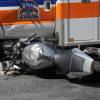
Beginner Motorcycle Tips: Seasoned Riders Give Their Best Advice
So, you’ve got your first motorcycle and it’s going great. The bike looks cool and it handles well. However, you’re still a newbie to motorcycles and there are many pitfalls you may encounter. Here are some tips from seasoned riders that you can utilize today.
Take a motorcycle safety course
If you’ve done your homework, then you know what your state legally requires before you ride. Some states require a motorcycle license, and others require that you pass a motorcycle safety course. If you didn’t do this before you bought your bike, you must do it before you get pulled over. That said, even if your state doesn’t require a safety course, you definitely should take it.
Obviously, a motorcycle is different than a bicycle. Not only are the laws different, but so is the feel of the ride. Rather than getting a scrape if you mess up, a motorcycle accident can be deadly. That’s why seasoned drivers suggest beginners take a motorcycle safety course. These courses take 20 hours or more, and they’ll cover many aspects of riding.
It won’t be a boring lecture. Many motorcycle safety courses involve practical hands-on experience with a bike. Some companies will have beginner bikes for you to ride, but some may require that you bring your own.
Check your tires
Just like a car, your bike’s tires are critical But, unlike car tires, which many drivers neglect to check, you must inspect your bike’s tires constantly. If your bike’s tires give out, it’ll be a bad day for you at the hospital. Losing one tire will mean a crash, whereas a car losing a tire likely won’t.
Seasoned riders will tell you to get into the habit of checking your tires routinely. Not only is this safer, but it’ll also give you a comfortable ride. If your tires have uneven pressure, then you’ll feel it when you’re riding.
Ride more defensively
Contrary to a motorcyclist’s macho image, you don’t want to be an aggressive rider. A motorcycle is simply smaller and less safe than a car. In an accident involving a car, you and your bike will take the brunt of the damage. That’s why Complex suggests you play it safe and ride defensively. This requires a mindset change, especially if you’re more familiar with driving a car.
Even at low speeds, you must stay aware. The moment you forget you’re on a bike can be the moment that you get hurt or killed by an SUV that wasn’t paying attention. Riding more defensively also means avoiding potentially dangerous situations like drafting behind cars. Remember blind spots; it’s hard for a driver to notice you.



